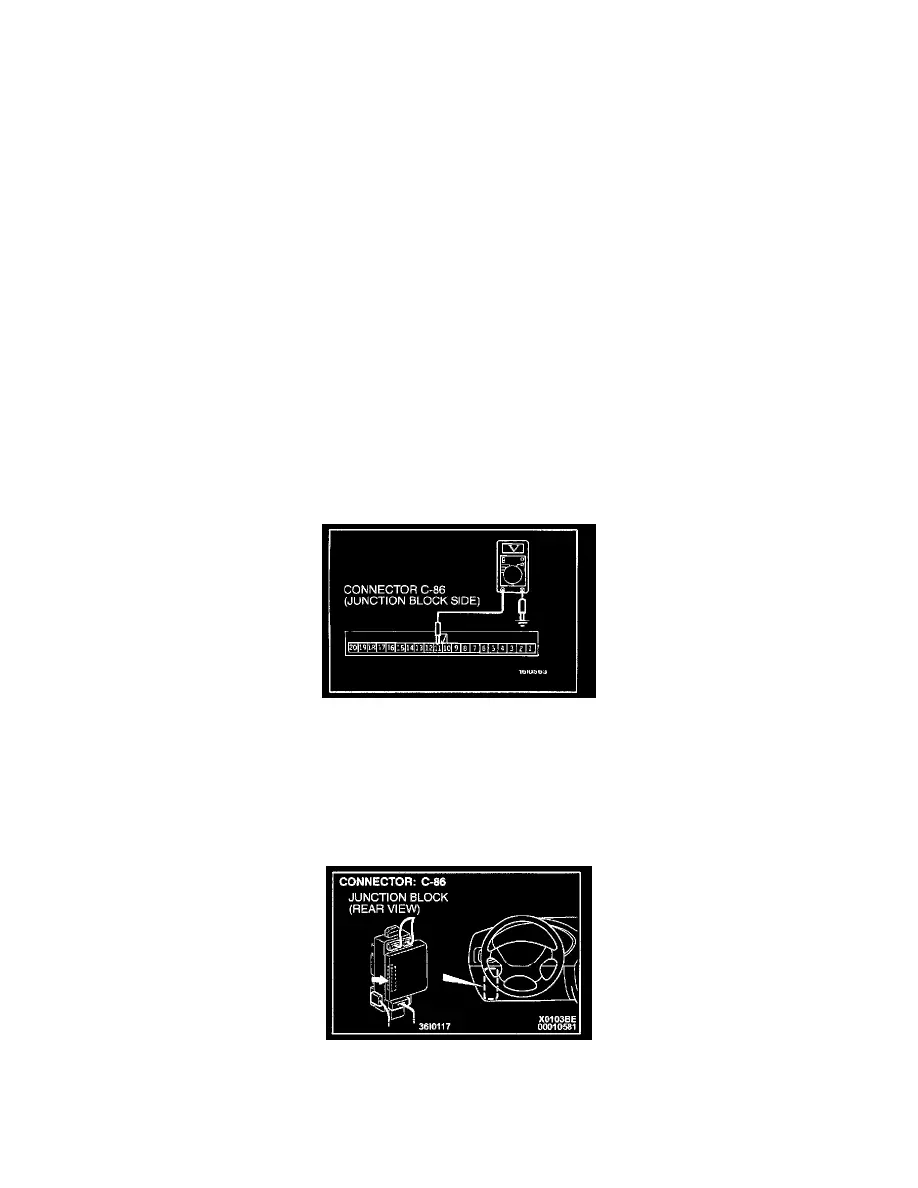Galant DE L4-2350cc 2.4L SOHC MFI (2000)

CIRCUIT OPERATION
-
The ETACS-ECU operates various functions according to the input signal from the ignition switch (IG1).
-
This circuit will work as a backup circuit if the battery circuit to the ETACS-ECU is open circuited.
TECHNICAL DESCRIPTION (COMMENT)
The ignition switch (IG1) input signal is used to operate the following devices or functions. If the signal fails, these devices will not work normally.
-
Ignition key tone alarm function
-
Light reminder tone alarm function
-
Seat belt tone alarm function
-
Power window timer function
-
Seat belt warning light
-
Ignition key hole illumination light
-
Headlight automatic shutdown function
-
Turn-signal light
-
Dome light dimming function
TROUBLESHOOTING HINTS
-
Malfunction of the ETACS-ECU
-
Damaged harness wires or connectors
DIAGNOSIS
Required Special Tools:
MB991223: Test Harness Set
MB991502: Scan Tool (MUT-II)
MB991529: Diagnostic Trouble Code Check Harness
STEP 1. Check the ignition switch (IG1) circuit at the ETACS-ECU connector C-86.
1. Disconnect the ETACS-ECU connector C-86 and measure at the junction block side.
2. Turn the ignition switch to "ON" position.
3. Voltage between terminal 11 and ground.
-
Voltage should be approximately 12 volts (battery positive voltage)
If not approximately 12 volts, go to Step 2.
If approximately 12 volts, replace the ETACS-ECU. The ignition switch (IG1) input signal should be able to be checked and the functions,
which are described in the "Technical Description (comment)," should work normally.
STEP 2. Check the ETACS-ECU connector C-86 for damage.
If the ETACS-ECU connector C-86 is damaged, repair or replace it. Refer to Harness Connector Inspection.
The ignition switch (IG1) input signal should be able to be checked and the functions, which are described in the "Technical Description (comment),"
